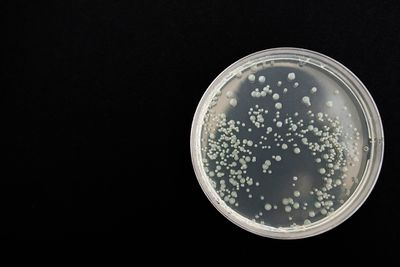Open Source Biotechnology
Basics
Open source biotechnology is in some ways more challenging than open source software, content or hardware. The unanswered question is: is there a place for an ecosystem based around free "software" running on biological processors ? Biological hacking has the potential to transform health care, address energy problems, mitigate climate change, and more. Or it could wreak environmental devastation and facilitate horrifying attacks by either individuals or governments.
Existing Open source Biotechnology Projects
IGEM
The International Genetically Engineered Machine competition (iGEM) is the premiere undergraduate Synthetic Biology competition. Student teams are given a kit of biological parts at the beginning of the summer from the Registry of Standard Biological Parts. Working at their own schools over the summer, they use these parts and new parts of their own design to build biological systems and operate them in living cells. This project design and competition format is an exceptionally motivating and effective teaching method. iGEM began in January of 2003 with a month-long course at MIT during their Independent Activities Period (IAP). The students designed biological systems to make cells blink. This design course grew to a summer competition with 5 teams in 2004, 13 teams in 2005 - the first year that the competition grew internationally - 32 teams in 2006, 54 teams in 2007, 84 teams in 2008, and 112 teams in 2009. Projects ranged from a rainbow of pigmented bacteria, to banana and wintergreen smelling bacteria, an arsenic biosensor, Bactoblood, and buoyant bacteria.
Community labs
DIYbio
Video
Implications of recent advances in DNA synthesis, assembly, and synthetic biology
Traditionally, genetic engineering has relied on techniques such as gene cloning, restriction enzymes and ligation. Introduction of the desired gene into a cell (in a process known as transformation) usually requires an antibiotic resistance gene to select for positive transformants. The antibiotic corresponding to the resistance gene is included in the media and kills (or slows the growth of) bacteria that do not contain the antibiotic resistance gene. There are a variety of techniques that are used to distinguish bacteria containing the fused (ligated) target gene from bacteria containing the resistance gene without the target gene including blue/white screening, target PCR, or gene sequencing.
More recently, progress has been made with alternative techniques such as recombineering, which is takes advantage of homologous recombination in cells undergoing meiosis. The resulting mutated sequence in the target organism may be indistinguishable from a naturally occurring mutation, for example when single-base substitutions are created. Therefore, it is becoming doubtful whether some patents that are based on this technique are actually enforceable. The user of the modified organism could claim that this is a natural, random mutation and there is no way to prove that it is not.
Areas Worth Exploring
- Biosensors
- Ethonol Production
- Bio-Hydrogen Production
- Bioluminescence Based Lighting
- Bioplastics
- Sensible GMO Crops
- Bioremediation
See Also
- The "Lab Stuff" Subsection of the "Construction Sets" Page
- Microfluidics
- Biolab
- Fermentor
- Biorefinery
- Lignin
Linkfest
- DIYBio - An Institution for the Amateur Biologist
- Counter Culture Labs- Biohacking and Citizen Science lab in SF bay area
- IGEM - International Genetically Engineered Machine competition - the premiere undergraduate Synthetic Biology competition
- Open WetWare Wiki - an effort to promote the sharing of information, know-how, and wisdom among researchers and groups who are working in biology & biological engineering
- BioBricks Foundation - encourages the development and responsible use of technologies based on BioBrick™ standard DNA parts that encode basic biological functions
- The BIOFAB: International Open Facility Advancing Biotechnology
- Indie Biotech - Open Source Biotechnology for Everyone, featured in this tech review article
- Biological Open Source (BiOS) - an effort to develop new innovation ecosystems for disadvantaged communities and neglected priorities
- Genotyp - open source biotech lab hardware, mainly intended for teaching institutions such as high schools
- OpenPCR - An open source PCR (polymerase chain reaction) machine based on Arduino
- Open Gel Box - An electrophoresis gel box, an instrument used in the separation and characterization of DNA.
- DremelFuge - DremelFuge is a printable rotor for centrifuging standard microcentrifuge tubes and miniprep columns
- Polonator G.007 - Automated, second-generation genome sequencing machine that is based on polony sequencing technology.


